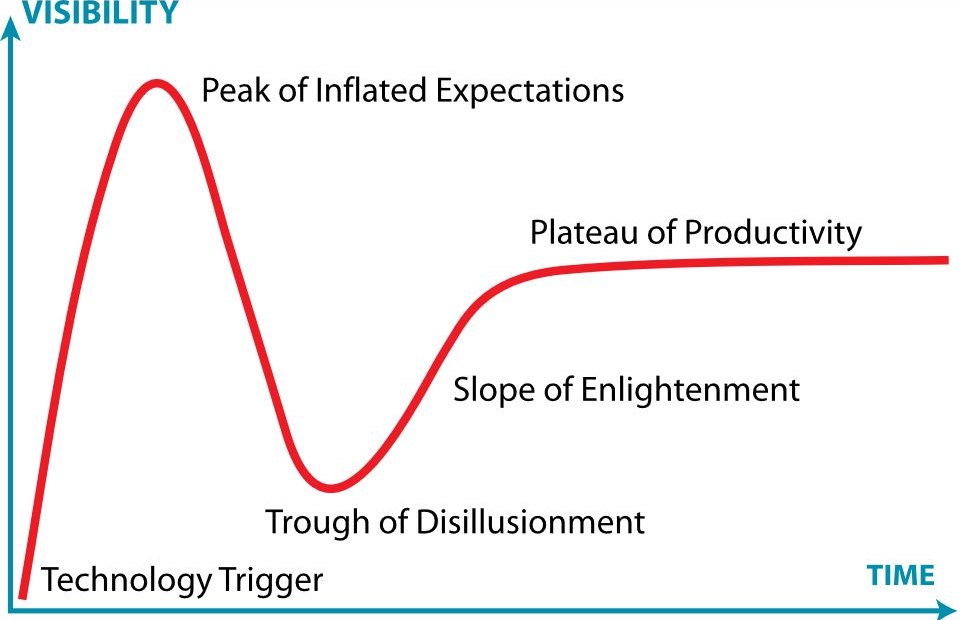
Technology changes quickly. This is especially true in web development. With companies such as Google, Facebook, Amazon, or Netflix leading the way, there will always be the “next best thing” every IT professional has to pay attention to. Depending on the size and budget, not all companies can invest in the latest trend of technology. The question always asked: “What can we invest in?” As a guideline, annually Gartner publishes their infamous Hype Cycle, that charts the popularity (or decline) of technology. For those who are on the cutting edge will try to follow anything towards the “Peak of Inflated Expectations”, where the technology is hot. However, the most interesting set are the ones sliding into the “Trough of Disillusionment”. In 2018, those web applications were:
- Point-of-Decision HTAP
- Cloud-Native Application Architecture
- Reactive Programming
- Microservices
- Mesh App and Service Architecture
- Public Web APIs
- Miniservices
Enterprise has already started to invest in those declining trendy ideas. However, in order to get to full adoption, IT Professionals have to familiarize with (and embrace) the new technology. It’ll be a difficult journey, but may be worth the investment. At this point, a great deal of material will be available since the concept has been around for a few years already. This is known as the “Slope of Enlightenment”. In order to get started, here are some suggestions on which presentation to listen to:
After listening to the presentations, one can determine the trend and make decisions on where/how to go to get Enterprise environments to the next level. It’ll take more time to get to the “Plateau of Productivity” where value can be realized by streamlining their execution for the long term production use.
Enterprise sure has plenty of work to do!


